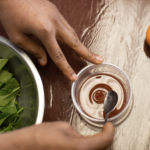A four-year-old girl was running in circles, and her younger brother was following her. She was laughing, delighted, having so much fun; he was having fun, too, but kept falling down. “Slow down, you’re making your brother fall,” a nearby adult said to the girl.
It’s an event I witnessed a few months ago. The comment struck a chord with me because the girl was not making her brother fall; other circumstances were certainly causing it, yes, but none of those things could be attributed to the girl. She was merely running to the full extent of her ability and having fun doing it. And yet, she was told to dim her abilities to protect her brother.
This instance illustrated to me how early girls begin being taught to be less so boys — and later, men — can keep up and not fall down. We teach it subconsciously, I think, in a thousand small ways that seem harmless. These experiences, though, are formative, and, when repeated throughout childhood, adolescence and adulthood, shape our beliefs about ourselves and how we “should” relate to others. We learn through these interactions how to gain social approval. And how not to.
In her 2012 TED Talk “We Should All Be Feminists,” novelist Chimamanda Ngozi Adichie said, “I would like today to ask that we should begin to dream about and plan for a different world. A fairer world. A world of happier men and happier women who are truer to themselves. And this is how to start: We must raise our daughters differently. We must also raise our sons differently.”
Ngozi Adichie is right: We must teach both our daughters and sons to nurture, to behave boldly, to express a full range of emotions, including anger and sadness. We must hold both our daughters and sons to the same moral standards, pass along the same knowledge about money and speak in the same ways about romantic relationships. We must think and talk critically with them about the implicit and explicit ideals the media portrays, reinforce equal capability, model what we hope they become and surpass. And we must be intentional about this from an early age.
So often, women and men are viewed as opposites; seeing each other this way causes the mayhem of unbalanced power structures, setting up an either/or dichotomous way of thinking, rather than a both/and philosophy of space and abundance. Since we are all human beings and can’t really be the opposite of something we are, a more useful and true way to view each other, perhaps, is as complements. We fit together; we are helpers to each other, lending our strengths and ways of experiencing the world to support the other. Rather than asking each other to be less, maybe we can encourage each other to be all we are.
It is helpful, sometimes, to learn about ourselves through difference. So, in this issue, we think about femininity through the lens of masculinity. We highlight men in our community who are doing cool things, such as Pat Buck, Jr., who is a freelance chef. We hear from a man who is a dad about the rituals of fatherhood. And we examine the ways society has traditionally taught women and men to inhabit their bodies. We hope these stories lift up our brothers while creating a more equal society for all of us.
No matter how you find yourself embodied in this life, let’s live the fullness of all we are and draw the same from others with respect, devotion and deep, deep love, not blaming others for our inadequacies, and never, ever making ourselves less to satisfy someone else.
Joy,
Mia

